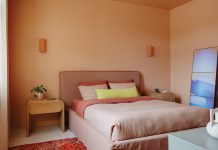Additions are tricky business, especially when it concerns a beautiful Federal Heights home with the artful classic detailing and woodwork that mark homes built at the turn of the twentieth century.

Owners of historic homes don’t have to be reminded how much lifestyles have changed in a hundred years. For example, the kitchen of a prospering family in 1900 was the domain of servants instead of the hub and heart of a modern family.
I recently photographed this addition done by Living Home Construction & Design (Chris Towson). Originally, the home extended about a yard in from the far wall seen in this overall kitchen shot. Towson extended the home back into the rear yard with clear instructions from the clients to keep the extension as consistent as possible to the character of original home but to give the family needed space.

The addition enjoys the benefits of an open plan as far as light and circulation, but each area retains its own defined identity, as the home’s history would suggest. Some of the custom features are the sizing of the dining room wall for the antique sideboard (a family piece) between the windows and the Art Deco dining room chandelier, an early purchase by the couple.

Above is a detail of the two pieces that influenced the dining room’s design.

An important element of the new design is the rounded doorway leading from the dining room to the butler’s pantry and the sculptured doors that mirror the shape leading into the butler’s pantry from the parlor on the opposite end.

A sitting area with a bay window looks out to the rear yard just off the kitchen.

I frequently see this approach now in Park City’s mountain homes, and this cozy room or nook is often the most used sitting area.
In photographing the home, I found that natural light worked the best for most of the areas, including showing the detailing of the dining room chandelier, but I did like how the art lights called attention to the collection of paintings by Utah artists.
See more of Scot Zimmerman’s Photo friday work here!























